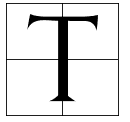 he concept of digging a hole through the Earth and jumping into it has captivated the imagination of many. The idea of a journey to the center of our planet raises numerous questions about physics, gravity, and the ultimate fate of such an endeavor. In this article, we will explore the hypothetical scenario of digging a hole through the Earth and examine the potential consequences of taking the plunge.
he concept of digging a hole through the Earth and jumping into it has captivated the imagination of many. The idea of a journey to the center of our planet raises numerous questions about physics, gravity, and the ultimate fate of such an endeavor. In this article, we will explore the hypothetical scenario of digging a hole through the Earth and examine the potential consequences of taking the plunge.
The Journey Begins: Digging Through Earth’s Layers
The first step in our imaginary journey is the daunting task of digging a hole through the Earth’s layers. As we delve into the depths, we encounter various geological formations, starting with the Earth’s crust, which consists of solid rocks and soil. The thickness of the crust varies across different regions, ranging from approximately 5 to 70 kilometers.
As we descend further, we reach the mantle, a semi-solid layer comprising hot, viscous rock. The mantle extends approximately 2,900 kilometers deep and is characterized by intense heat and pressure. The digging process becomes increasingly challenging due to the extreme conditions encountered in this layer.
Finally, we reach the core, divided into the outer and inner core. The outer core is primarily composed of liquid iron and nickel, while the inner core is solid due to even greater pressure. The core extends approximately 3,500 kilometers to the center of the Earth.
The Gravity Dilemma: Freefall and Reaching the Center
As we dig deeper into the Earth, the force of gravity becomes a significant factor to consider. Gravity is responsible for holding us to the Earth’s surface and determines our weight. As we descend toward the center of the Earth, gravity gradually decreases due to the increasing distance from the planet’s mass.
Upon reaching the center, gravity from all directions would pull us equally, resulting in a state of weightlessness. However, reaching the exact center of the Earth is impossible due to the intense heat and pressure at that depth. Thus, the notion of freefall or floating at the center is purely hypothetical.
Instead, if we were to continue digging beyond the core, gravity would reverse its pull, causing us to gradually slow down and eventually come to a stop at the opposite end of the hole. From there, we would begin to fall back towards the center in a pendulum-like motion.
Facing the Challenges: Temperature, Pressure, and Survival
Surviving such an extreme journey presents immense challenges. The temperature and pressure increase significantly as we move deeper into the Earth. In the mantle, temperatures reach thousands of degrees Celsius, enough to melt rock. The core’s heat is even more intense, with temperatures exceeding 5,000 degrees Celsius.
The pressure in the Earth’s interior also rises dramatically. The intense pressure in the mantle and core would crush any object or living organism attempting to venture beyond the core. Additionally, the lack of breathable air and the presence of toxic gases would make survival impossible.
Moreover, the sheer distance and time required to dig a hole through the Earth pose further obstacles. Given the limitations of technology and human lifespan, the notion of physically accomplishing such a feat is currently beyond our reach.
Theoretical Consequences: Earth’s Rotation, Momentum, and Oscillations
The hypothetical scenario of digging a hole through the Earth and jumping in raises questions about the Earth’s rotation and potential consequences for its momentum. The Earth rotates at a speed of approximately 1,670 kilometers per hour at the equator. When an object moves away from the center of rotation, conservation of angular momentum dictates that its rotation speed should increase.
In this scenario, as we move towards the Earth’s core, our motion would slow down the planet’s rotation ever so slightly. However, the impact on Earth’s rotation would be negligible due to the massive scale of the planet and the minuscule effect of a single person’s motion.
Furthermore, the Earth’s oscillations, such as its natural vibrations or seismic waves, would also come into play. The disturbance caused by digging a hole through the Earth could potentially generate seismic activity, leading to localized earthquakes or tremors. However, the magnitude and extent of these effects would depend on numerous factors and require further scientific investigation.
While the idea of digging a hole through the Earth and jumping into it may sound intriguing, it remains a hypothetical scenario with numerous challenges and theoretical consequences. The extreme temperatures, pressures, and survival difficulties, coupled with the limitations of technology and human capabilities, make this endeavor impossible in practice.
Moreover, the Earth’s rotation and momentum would be minimally affected by such an action. The theoretical exploration of this concept allows us to appreciate the complexities of our planet’s structure and the forces that govern it. Ultimately, journeying to the center of the Earth remains a fascinating thought experiment rather than a practical possibility.
Avid Writer with invaluable knowledge of Humanity!
Upcoming historian with over 30 million views online.
“You make your own life.”





